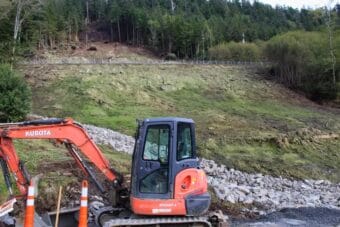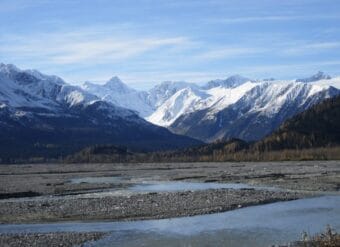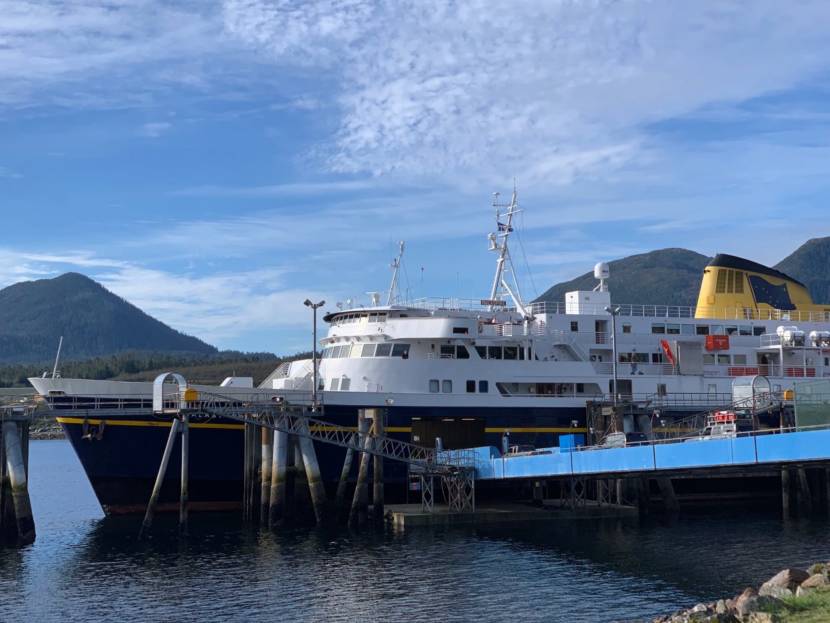
The last ferry for Prince Rupert left Ketchikan in late 2019. But state transportation officials say sailings could resume as early as next May.
First established in the 1960s, the 120-mile voyage is the shortest link between Southeast Alaska and the North American road system.
But around two years ago, the U.S. Department of Homeland Security demanded that its agents checking Alaska-bound vehicles and passengers inside the Prince Rupert ferry terminal be allowed to carry their sidearms or have an armed Canadian police presence.
That didn’t pan out and the ferry link was suspended.
The marine highway’s general manager John Falvey says state officials were working with federal officials in both countries to find a workaround after one of the last Canada-bound ferries sailed.
“And that stopped with COVID,” Falvey told CoastAlaska in a recent interview. “And the Canadians closed their border. And of course, we couldn’t get in for the last year and a half.”
Land, Rail, Marine, and Air Transport Preclearance Agreement now in force
The passage of a bilateral agreement signed in 2015 is now in force allowing U.S. agents to be armed on Canadian soil.
“U.S. pre-clearance officers are authorized to carry the same regulated items, defensive equipment, and restraint devices in Canada that (Canadian customs) officers are permitted to carry in the same operating environment,” Public Safety Canada spokesperson Tim Warrington said in a statement to CoastAlaska.
Once the Prince Rupert ferry terminal has been designated as a certified “pre-clearance” facility U.S. agents will have the same rights to carry weapons as their Canadian counterparts, officials in both countries say.
“CBP officers will be armed at Prince Rupert when operations are expected to resume May 2022 pending any delays or changes,” U.S. Customs and Border Protection spokesperson Rhonda M. Lawson wrote in a statement to CoastAlaska.
Falvey says there’s likely enough time to get the Prince Rupert terminal area to meet the standards of pre-clearance in time for weekly sailings between Ketchikan and Prince Rupert.
“We’re open to get going again — on May 1,” he said.
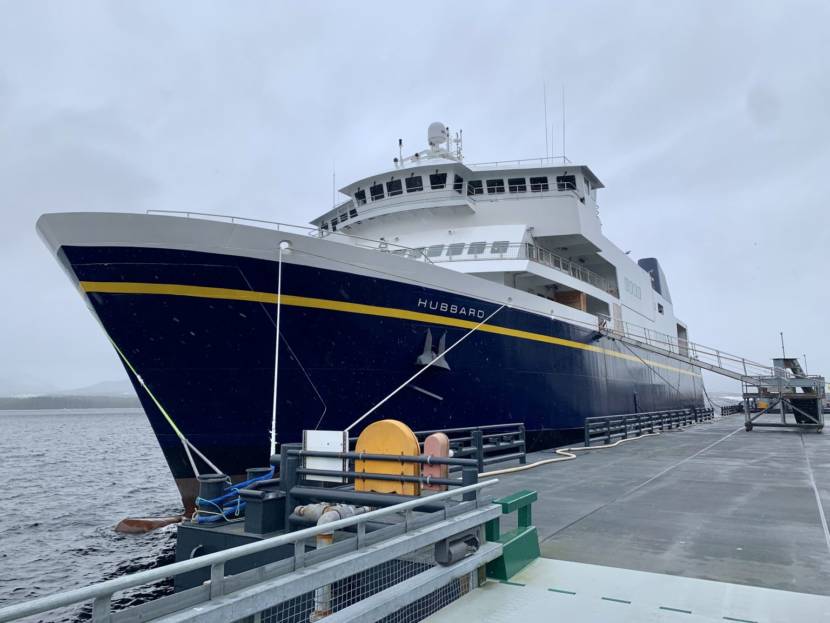
Alaska Class Ferry to get crew quarters
Falvey’s comments were part of a recent wide-ranging interview in which he gave updates on the marine highway. He also confirmed that one of the Alaska Class Ferries, the Hubbard, built with $60 million in state funds, would be modified to extend its range at the end of the year.
The Hubbard was completed two years ago but has yet to enter service. The state Department of Transportation plans to open bidding for the installation of crew quarters, which would allow the ship to run for longer than 12 hours at a stretch.
It’s an idea that dates back to Gov. Bill Walker’s administration but has been blocked last year by Gov. Mike Dunleavy’s vetoes when state lawmakers inserted $17 million for the project.
This time, Falvey says federal highway dollars would pay for the work which he says would go to bid.
State officials say they hope to have construction underway in November. That would put the Hubbard on track to enter service in early 2023.
But where in the system it would be deployed isn’t set, Falvey said.
“Quite honestly, we’re still not sure yet,” he said. “It could stay in some capacity in Southeast. It could go to Prince William Sound to replace the Aurora.”
Both Alaska Class Ferries have also had side doors installed since they were completed which allows them to tie up at more docks.
Tazlina moored in Auke Bay as a reserve ship
The Hubbard’s sister ship the Tazlina remains tied up at Juneau’s Auke Bay terminal.
“She’s on a hold — she’s ready to go,” he said. “But she could be used if we needed it.”
The $60 million Alaska-built ferry ran briefly for a few months in 2019 and 2020 but has been sidelined for much of the time as it has limited range. He says it could be reactivated with a week’s notice to get a crew on board to run point-to-point between Southeast ports.
“That ship can get into all the village locations except Pelican,” he said.
The Dunleavy administration has been negotiating with Goldbelt, Inc. — Juneau’s Native corporation — about building a ferry terminal at Cascade Point which could shorten the voyage between Juneau’s road system and Haines and Skagway.
The reasoning is that the Tazlina could complete a round-trip to upper Lynn Canal communities within the 12-hour window without crew quarters.
But Falvey says those discussions have been happening at a higher level.
“The commissioner’s office is handling that,” Falvey said. “I’m not privy to what’s happening with Cascade Point at this point.”
The Commissioner’s Office said in response to inquiries that DOT and Goldbelt would “continue to discuss the potential details and terms of a new terminal at Cascade Point” but didn’t have any further details to release.
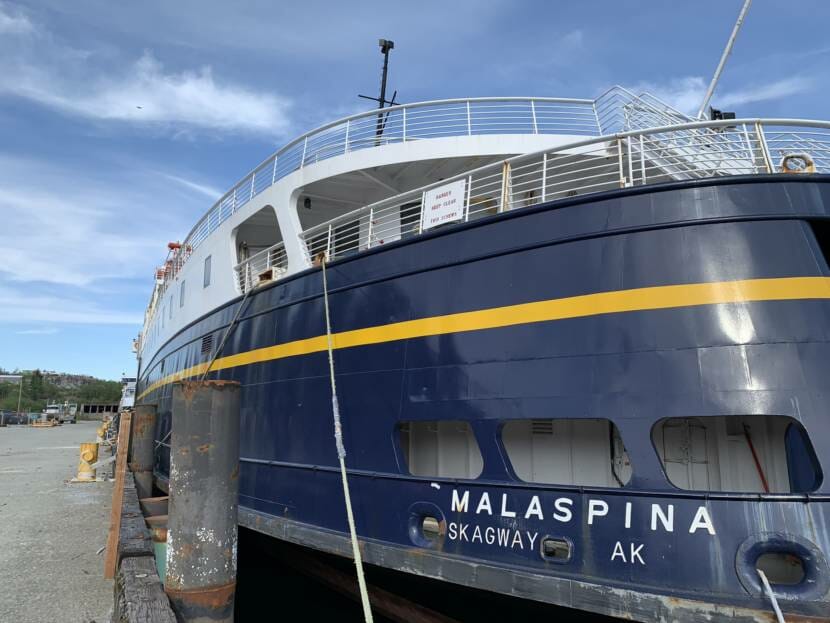
Department of Transportation paying $38,500 a month to keep Malaspina tied up at Ward Cove
The fate of the ferry Malaspina also remains up in the air. The vessel has been stripped and suffered some water damage from weather after being laid up for cost-cutting purposes in 2019.
Gov. Mike Dunleavy offered the ship up for free to the Philippines as an apparent goodwill gesture. But except for a phone conversation between the governor’s staff and consular officials in San Francisco the offer apparently didn’t go anywhere.
The marine highway system’s general manager told lawmakers this spring there had been some interested parties. And he told CoastAlaska recently that it’s out of his hands.
“There’s a lot of interest, but we’re still on a hold,” Falvey said. “That’s guidance comes that comes from above me as to what to do with that ship. So, we’re in Ward Cove. Awaiting guidance. I guess that’s what I can say right now.”
CoastAlaska filed a public records request on June 23 seeking the commissioner’s office’s emails and internal discussions outlining commercial interest in the Malaspina. But as of September 16 the agency says those records remain under legal review.
In the meantime, agency officials confirm that the Malaspina remains tied up at the private Ward Cove facility near Ketchikan at a cost of $38,500 a month. The expense of keeping ferries tied to the docks has been a contentious issue with state lawmakers.
Alaska Marine Highway System offering better employment terms, general manager says
There are some bright spots for the state-run ferry system. Due to federal funding for marine highway operations, the state has been able to budget 18-months ahead. That’s given DOT the ability to guarantee hours to crew year-round which he says should boost hiring.
“With the budget that we’ve got, we’re able to offer full-time employment,” Falvey said. “And we’re making that a key part of our pitch (to attract new hires).”
Seasonal layoffs during the winter had caused the ferry system to lose crew members leading to shortages that have in at least one instance disrupted service when a sailing was abruptly canceled.
